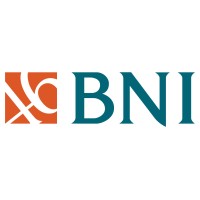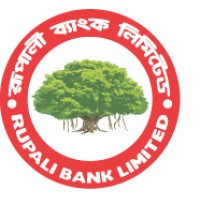Company Cyber Security Posture
NANA
NA Company Details
NA
NA
NA
NA
NA
NA
Scan still pending
NA
NA
Between 200 and 800
This score is AI-generated and less favored by cyber insurers, who prefer the TPRM score.
 NA Global Score
NA Global Score.png)

Company Scoring based on AI Models
| Model Name | Date | Description | Current Score Difference | Score |
|---|---|---|---|---|
| AVERAGE-Industry | 03-12-2025 | This score represents the average cybersecurity rating of companies already scanned within the same industry. It provides a benchmark to compare an individual company's security posture against its industry peers. | N/A | Between 200 and 800 |
Company Cyber Security News & History
| Entity | Type | Severity | Impact | Seen | Url ID | Details | View |
|---|
Company Subsidiaries

NA
Access Data Using Our API

Get company history
.png)
NA Cyber Security News
Emirates NBD partners with McKinsey to drive AI and advanced analytics
Emirates NBD entered into a partnership with strategy consulting firm McKinsey & Company with the aim of turning the bank into a leader in artificial ...
Emirates NBD partners Silent Eight to bolster compliance operations
Dubai-based banking group Emirates NBD has formed a new partnership with anti-financial crime platform Silent Eight to trigger a new level of compliance ...
(PDF) Digital Transformation in the UAE Banking Sector: A Case of Emirates NBD
As the world moved towards digitalization, Emirates NBD recognized that the future of banking lay in technology-driven solutions that could ...
Emirates NBD Bank Wins Cyberbit's 2022 International Cyber League (ICL) Competition
Emirates NBD Bank is the winner of the 2022 International Cyber League (ICL) competition. The team outperformed 200 cyber defense teams.
Emirates NBD partners BlackRock to build private markets investment platform
Emirates NBD has teamed up with US asset management giant BlackRock to create a new investment platform built to offer its wealth clients access to alternative ...
Emirates NBD accelerates spending on digital transformation, security
Emirates NBD's security efforts are part of the banking group's AED1 billion (US$60 million) commitment to digital transformation. The bank, for ...
Emirates NBD Bank wins largest ever simulated cyberattack competition
Emirates NBD Bank wins Cyberbit's International Cyber League (ICL) competition, a mock cyber war and simulated attack exercise.
Emirates NBD collaborates with Leo Burnett to promote cybersecurity
The campaign aims at raising public awareness of cybersecurity and encouraging customers to take action and actively report fraudulent activity.
Cybersecurity for Businesses in Dubai: Essential Strategies
Essential cybersecurity measures for Dubai businesses include implementing robust firewall and antivirus solutions, conducting regular security ...

NA Similar Companies

PT. BANK NEGARA INDONESIA (Persero) Tbk.
Since its establishment in 1946, BNI has been part of the dynamic of national development in Indonesia. Now BNI has grown and developed into a solid national bank with a sustainable financial performance. ‘Serving the Country, Pride of the Nation”, BNI continues to increase its contribution for the

Handelsbanken
We are Europe's safest commercial bank, with roots in local communities throughout Sweden, the Netherlands, Norway, and the UK. Across a range of digital and physical meeting places, our branch teams offer ‘up close and personal’ financial advice and solutions, based on customers’ individual needs.

Groupe Crédit Agricole
Crédit Agricole is the French economy’s leading financier and one of the top banking operators in Europe. As a leader in retail banking in Europe, the Group is also the leading European asset manager, the first bank insurer in Europe, and the third largest European operator in project financing. On

Rupali Bank Limited
Rupali Bank (Bengali: রূপালী ব্যাংক) is a commercial bank in Bangladesh. It was established as a nationalised bank in 1972 under the Bangladesh Banks Nationalisation Order, through the amalgamation of the branches of Muslim Commercial Bank, Australasia Bank and Standard Bank that were operating in E

Industrial Bank of Korea
Established in 1961 under the Industrial Bank of Korea Act, Industrial Bank of Korea (IBK) is a leading financial institution dedicated to fostering the growth and development of small and medium-sized enterprises (SMEs) in South Korea. As a government-backed bank, IBK plays a vital role in the nati

Santander México
Somos un grupo financiero que ofrece productos y servicios bancarios a clientes particulares, empresas e instituciones en todos los estados de la Rep√∫blica Mexicana, con cobertura en todos los sectores de la industria. Los productos y servicios del Grupo est√°n pensados para todo tipo de clientes,

Frequently Asked Questions
Explore insights on cybersecurity incidents, risk posture, and Rankiteo's assessments.
NA CyberSecurity History Information
How many cyber incidents has NA faced?
Total Incidents: According to Rankiteo, NA has faced 0 incidents in the past.
What types of cybersecurity incidents have occurred at NA?
Incident Types: The types of cybersecurity incidents that have occurred include .
Additional Questions
What Do We Measure?
















Every week, Rankiteo analyzes billions of signals to give organizations a sharper, faster view of emerging risks. With deeper, more actionable intelligence at their fingertips, security teams can outpace threat actors, respond instantly to Zero-Day attacks, and dramatically shrink their risk exposure window.
These are some of the factors we use to calculate the overall score:
Identify exposed access points, detect misconfigured SSL certificates, and uncover vulnerabilities across the network infrastructure.
Gain visibility into the software components used within an organization to detect vulnerabilities, manage risk, and ensure supply chain security.
Monitor and manage all IT assets and their configurations to ensure accurate, real-time visibility across the company's technology environment.
Leverage real-time insights on active threats, malware campaigns, and emerging vulnerabilities to proactively defend against evolving cyberattacks.




